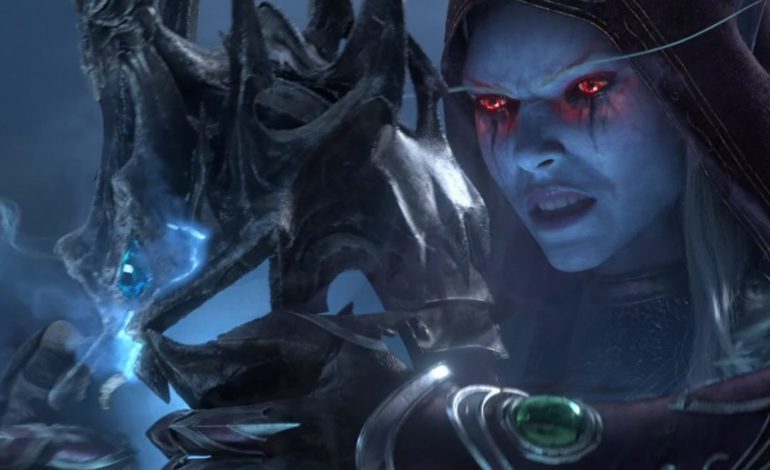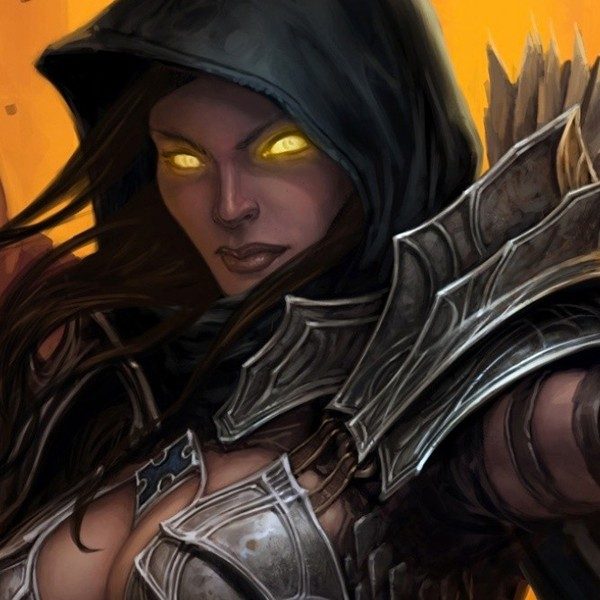

For last week’s BlizzCon 2019, Blizzard officially revealed the next chapter of their massively-multiplayer online mainstay World of Warcraft. The Shadowlands expansion debuted with a very striking new cinematic trailer that sets up what’s next in the ongoing story surrounding Horde “hero” Sylvanas Windrunner and the tenuous relationship between the living and the dead.
In World of Warcraft‘s previous seven expansions, the level cap has always increased to reflect the player character’s progression through the content’s new challenges, but after fifteen years of never-ending growth, the current level cap of 120 in Battle for Azeroth may feel a little intimidating for people looking to come back to the game or to visit Azeroth for the first time.
To address this, Blizzard is doing something new in the World of Warcraft series by “squishing” levels across the board for all players down, with the new maximum set at 60 like the nostalgia-powered pre-expansion World of Warcraft: Classic Edition. All players currently in Battle for Azeroth and at the current cap of 120 will log into Shadowlands on its release in 2020 with their levels set to 50, with 60 being the beginning Shadowland’s end game.
This new level decrease will obviously generate a lot of questions for anyone a little familiar with World of Warcraft. In many ways, the player’s level dictates the game by restricting or allowing access to areas and abilities. To help explain why Blizzard feels this change is ultimately positive for World of Warcraft and its future, Producer Michael Bybee and lead engineer Patrick Magruder gave an interview to Eurogamer where they went into detail about what’s in store.
According to Magruder, the lower level value won’t translate to a lower level of power and adds that “you’ll probably have more abilities” instead of less, describing it as “repackaging” instead of neutering. He goes on to explain the restructuring of the leveling experience: “What will happen is a new player will start off in a new starting area [for Shadowlands], or they can choose to go to one of the old ones, but the new starting area, Exile’s Reach, is custom crafted for levels one to 10, and it will teach them some basics on how to do World of Warcraft, ending in a mini-dungeon-like experience to get a taste of all of the things WoW has to offer.”
After this one through 10 starting experience, players will be encouraged to jump right into Battle for Azeroth‘s content to continue leveling on their way to start playing through Shadowlands. Blizzard feels that this will be the best way to keep players unified one one content for a more social feel, and it also helps to unify a story that after 15 years has become a bit hard to follow and at times inconsistent when exploring the world at large.
For “experienced players,” there’s an option to go back and revisit old content according to preference. “A new player will go to Battle for Azeroth. Experienced players can choose another story. And they’ll choose Classic or they can choose an expansion,” Magruder explained.
Each previous expansion altered the world of World of Warcraft significantly, adding new dimensions and planets or taking away iconic features as seen in Cataclysm or the recent burning of Teldrassil, the traditional Night Elf starting area and main Alliance city. Magruder has a convenient way to hand-wave those concerns away. “We call it Chromie Time by the way.”
She’s like our time-travelling [guide]. Outdoor time-walking is another phrase,” Magruder elaborates. “Basically you travel back in time and see the world as it once was. You can play through the Cataclysm from 10 to 50, or a new player can play through Battle for Azeroth from 10 to 50.”
One major takeaway from Blizzard’s recent release of World of Warcraft: Classic seems to be that it feels good to players to have each level “mean” something, giving a sense that each level is an important milestone. “One of the key goals is ‘every level matters’. You’ll get a new ability or we’ll improve an ability, or you’ll unlock a new piece of content. Something. You will always feel like every level is a really awesome, engaging experience – that’s why we chose those numbers,” Magruder told Eurogamer.
Michael Bybee added: “I’ve been going around talking to people about this, and most people I’ve talked to are actually really excited to get back to a point where the number of your level makes sense, because once you get up to 110, 120, it might as well be 1000.”
If every level matters, will it take more real-world time to earn each one up to the new cap of 60? “Actually, it will take significantly less time to level,” Magruder said. “Somewhere between 60 to 70 percent I think was the number – 60 to 70 percent less time to go from level one to level 50.” That means new and returning players starting new characters can get caught up and into the most current content together sooner than later, and potentially without the risk of burning out early on a long grind.
Elaborating on the “repackaging” of classes for Shadowlands, Bybee and Magruder explained that classes wouldn’t be gutted along with the level squish. Instead, each level would bring a set of new abilities that feel rewarding. “It’s all about the pacing,” Magruder said. “That’s really what our focus is – making it feel good to play and level-up a character.”
The level squish down to a cap of 60 will also come with a stronger focus on “class fantasy,” making it feel unique, powerful, and good to play as whichever class the player chooses. “It’s more likely you’re going to have some new buttons to play with. It’ll be a lot of returning classics,” Magruder shared, referring to abilities that have been pruned in previous expansions in an effort to streamline class design. “Things might be pulled back out of the talent tree and put back into the mainline for the class, and then new talents may appear.” Paladin auras and more totems for shamans were offered as examples of how class fantasy will be featured in Shadowlands.
World of Warcraft: Shadowlands will release in 2020 and feature the mysterious realm beyond the world of the living, with five new zones, four Covenant factions, and a new style of randomized dungeon.
Play games, take surveys and take advantage of special offers to help support mxdwn.
Every dollar helps keep the content you love coming every single day.

